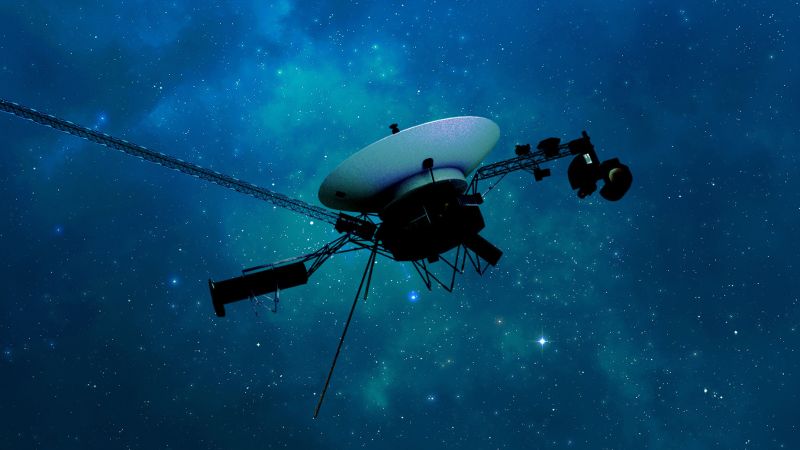The Voyager program has captivated scientists and space enthusiasts alike for decades, showcasing humanity’s reach into the cosmos. The Voyager 1 and Voyager 2 probes, launched just two weeks apart in 1977, have revolutionized our understanding of the solar system. They sent back breathtaking and intricate images of several major planets, including Jupiter, Saturn, Uranus, and Neptune, while unraveling many of the mysteries that surrounded them.
Fast forward to today, over 47 years later, Voyager 1 and 2 are still actively exploring the vastness of interstellar space. The noteworthy aspect of these missions is not only their revolutionary findings but also their perseverance against the odds. Voyager 1, currently at an astounding distance of approximately 15.5 billion miles (or 24.9 billion kilometers) from Earth, is recognized as the most distant human-made object from our planet. The concept that a device created by human hands could venture so far, carrying with it a golden record designed to tell the story of humanity to potential extraterrestrial life, is nothing short of profound.
As impressive as the journeys of the Voyager probes are, they are not without challenges. The engineering teams have had to be increasingly inventive to sustain the probes’ operations. As energy supplies dwindle—due to the age of the spacecraft and its components—maintaining functionality is becoming a growing concern. Voyager 1 briefly experienced a communication blackout due to power limitations, but the team successfully restored its function and has managed to keep vital instruments operational. Currently deemed essential, four out of the ten scientific instruments onboard Voyager 1 continue to transmit data regarding the cosmic environment around it.
Kareem Badaruddin, the Voyager mission manager at NASA’s Jet Propulsion Laboratory located in Pasadena, California, expressed his amazement, stating, “But these probes have lasted so much longer than anyone anticipated they would.” This sentiment is echoed throughout the scientific community as the mission team strives to extract every last bit of power and scientific data from these probes, which have outperformed all initial expectations.
Turning back to earthly matters, some curious developments have also emerged within our oceans. In an interesting turn of events, a male orca in Washington’s Puget Sound has been spotted with a dead salmon draped over his head. This recalls a strange phenomenon noted in 1987, where orcas off the northwestern coast of North America were photographed similarly. While some might entertain whimsical notions of a returning marine fashion trend, scientists urge caution against hasty conclusions, implying that such behavior may have other underlying causes.
Moreover, orca pods have demonstrated advanced hunting strategies involving the whale shark, an impressive feat for these marine mammals. Shifting focus towards a more terrestrial environment, a study has revealed that wolves may also play an unexpected role as pollinators. This insight stems from observations by biologist Claudio Sillero, who noticed Ethiopian wolves licking the flowers of red hot poker plants over multiple decades, suggesting that these carnivorous creatures contribute to the pollination process.
On the technological front, NASA’s Artemis program continues to advance its agenda to land astronauts at the lunar south pole. Yet, fresh complications have emerged, pushing the much-anticipated Artemis III mission to mid-2027. Simultaneously, Artemis II, which is set to carry four astronauts around the moon, now faces a delay until at least April 2026 to launch. The setbacks largely stem from technical troubles with the heat shield of the Orion crew capsule, which sustained more damage than anticipated during the Artemis I mission.
Shifting our gaze to ancient history, researchers exploring the remains of an 18-month-old boy from 13,000 years ago in Montana have provided valuable insights into the diet of the Clovis people, ancestors to Native Americans. The analysis indicates the child’s mother primarily consumed woolly mammoths and other significant game, thus revealing the hunting strategies of these ancient peoples.
Lastly, fascinating developments in technology and science continue to emerge, from circuit-board backpacks designed to transform insects into search and rescue “cyborgs” to striking astronomical images captured by the James Webb Space Telescope. These converging narratives not only invite reflection on our past but also expand the horizons of our understanding of science and nature. To stay updated on these enthralling discoveries, subscribing to science newsletters from major outlets could be a valuable endeavor for those intrigued by the mysteries of the universe.



